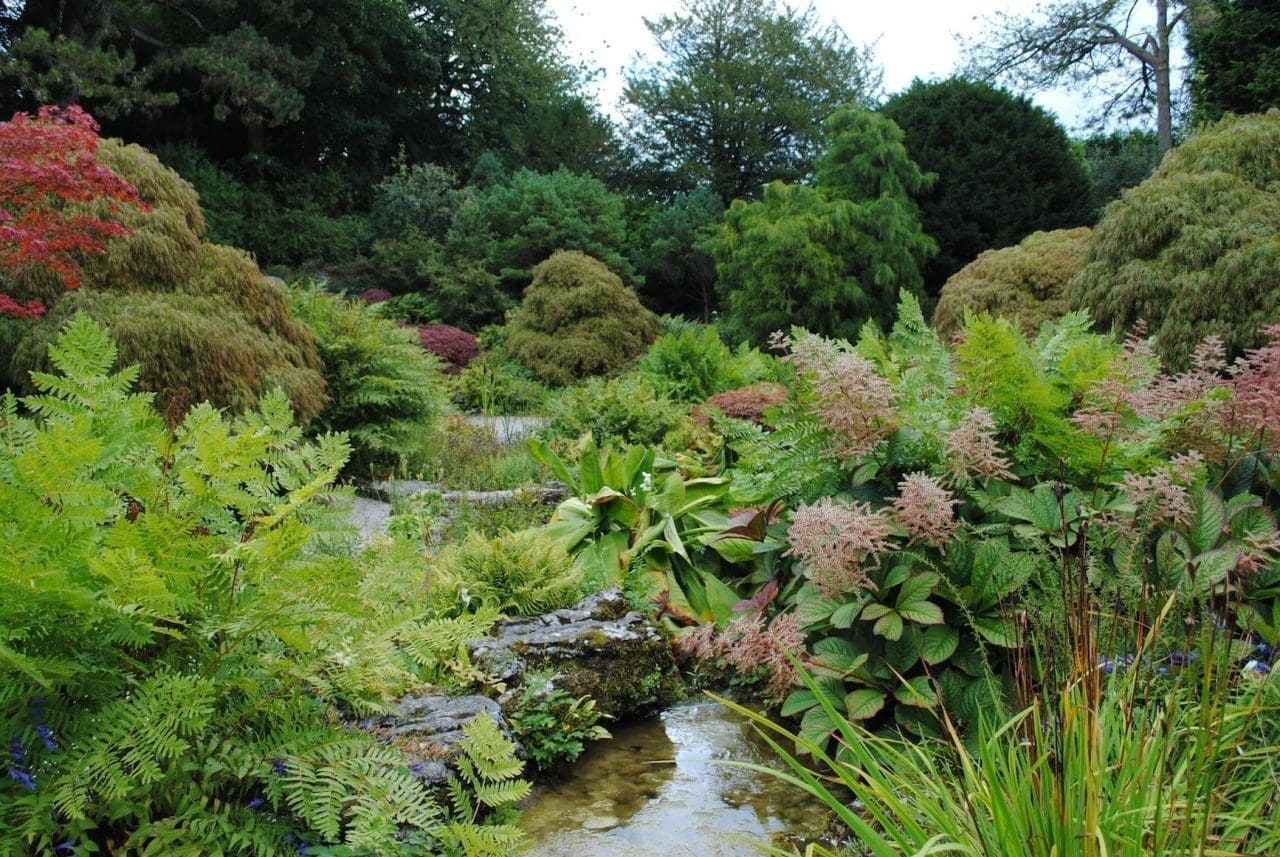Table of Contents
ToggleImportance of Sustainable Landscape Design
A sustainable landscape design focuses on creating an outdoor space that is in harmony with nature, minimizes the use of resources, and reduces negative impacts on the environment. It considers the local climate, soil conditions, and native plant species, which are adapted to the region and require less water, fertilizer, and pesticides. Sustainable landscape design also promotes healthy soil, encourages wildlife habitat, and reduces waste, making it an environmentally responsible approach to landscaping.Benefits of Sustainable Landscape Design
Sustainable landscape design offers several benefits, including environmental, economic, and social advantages.Environmental Benefits
One of the significant environmental benefits of sustainable landscape design is water conservation. Traditional landscapes often require excessive watering, which can strain local water resources and contribute to water pollution through runoff. In contrast, sustainable landscapes use water efficiently through techniques such as rainwater harvesting, drip irrigation, and smart irrigation systems, reducing water waste and promoting water conservation. Another environmental benefit is the use of native plants in sustainable landscape design. Native plants are adapted to the local climate, requiring less water, fertilizer, and pesticides, and providing habitat for local wildlife. They also help to prevent the spread of invasive species, which can outcompete native plants and disrupt local ecosystems. Sustainable landscape design also promotes soil health by reducing erosion, improving soil structure, and increasing organic matter content. Healthy soil supports the growth of plants, improves water infiltration and retention, and sequesters carbon, contributing to climate change mitigation.Economic Benefits
Sustainable landscape design can also provide economic benefits to homeowners. By reducing the use of water, fertilizer, and pesticides, sustainable landscapes can result in lower utility bills and maintenance costs. Moreover, sustainable landscapes can increase property value by enhancing curb appeal, creating functional outdoor spaces, and attracting potential buyers who value environmentally-friendly features.Social Benefits
In addition to the environmental and economic benefits, sustainable landscape design also offers social advantages. A well-designed landscape provides a space for relaxation, recreation, and social interaction, contributing to the physical and mental well-being of homeowners and their communities. Sustainable landscapes also promote community engagement, education, and awareness about environmental issues, fostering a sense of stewardship and responsibility towards the environment.Principles of Sustainable Landscape Design
To create a sustainable landscape design, it is essential to follow certain principles that prioritize environmental sustainability, resource conservation, and biodiversity preservation. Here are some key principles of sustainable landscape design:Water Conservation
Water conservation is a crucial principle of sustainable landscape design. It involves reducing water consumption through various techniques such as selecting drought-tolerant plants, using efficient irrigation methods like drip irrigation or smart irrigation systems, and capturing rainwater for irrigation through rain barrels or rain gardens. By conserving water, sustainable landscape designs help reduce the strain on local water resources and promote responsible water use.Native Plant Selection
Using native plants in landscape design is another important principle of sustainability. Native plants are adapted to the local climate, soil, and wildlife, requiring less water, fertilizer, and pesticides. They also provide habitat for local wildlife, promote biodiversity, and help maintain a healthy ecosystem. Native plants can be selected based on their aesthetic appeal, as many native plants are beautiful and can add color and diversity to the landscape.Soil Health
Healthy soil is the foundation of a sustainable landscape design. It supports plant growth, improves water retention, and contributes to carbon sequestration. Sustainable landscape designs prioritize practices that promote soil health, such as using organic matter, avoiding excessive tilling, and preventing erosion. Adding compost, mulch, and other organic materials to the soil can improve its structure, fertility, and water-holding capacity, creating a healthy environment for plants to thrive.Wildlife Habitat Creation
Creating wildlife habitat is an important aspect of sustainable landscape design. By providing shelter, food, and water sources for local wildlife, sustainable landscapes can promote biodiversity and contribute to the conservation of native species. This can be achieved by incorporating features such as birdhouses, bat boxes, pollinator gardens, and water features like bird baths or small ponds. Wildlife-friendly landscapes also provide opportunities for homeowners to observe and connect with nature.Integrated Pest Management
Sustainable landscape designs prioritize the use of integrated pest management (IPM) practices to manage pests in an environmentally responsible manner. IPM involves using a combination of strategies such as biological controls, cultural practices, and targeted pesticide use only when necessary and in a judicious manner. This approach minimizes the use of harmful pesticides, reduces the risk of pesticide runoff, and promotes a healthy ecosystem where pests are managed without causing harm to beneficial insects or other wildlife.Steps to Create a Sustainable Landscape Design
Creating a sustainable landscape design involves several key steps that homeowners can follow to ensure their outdoor space is environmentally friendly and sustainable. Here are the general steps:Assessing Site Conditions
The first step in creating a sustainable landscape design is to assess the site conditions of your property. This includes understanding the local climate, soil type, drainage patterns, and available sunlight. This information will help you determine which plants are best suited for your landscape and how to design your outdoor space accordingly.Planning and Design
Once you have assessed the site conditions, the next step is to plan and design your landscape. This includes creating a detailed landscape plan that incorporates sustainable practices such as water conservation, native plant selection, soil health, wildlife habitat creation, and integrated pest management. You can also consider other design elements such as outdoor living spaces, pathways, and focal points to enhance the aesthetic appeal and functionality of your landscape.Plant Selection and Installation
Selecting and installing the right plants is a crucial step in creating a sustainable landscape design. Choose native plants that are adapted to your local climate, soil, and wildlife, and require less water, fertilizer, and pesticides. Group plants with similar water and sunlight needs together to create efficient irrigation zones. Proper planting techniques, such as digging the right size hole and amending the soil with organic matter, can help plants establish and thrive in your landscape.Maintenance and Management
Maintaining a sustainable landscape requires ongoing care and management. This includes proper watering, mulching, pruning, and fertilizing as needed. It also involves monitoring for pests and diseases and using integrated pest management practices to manage them in an environmentally responsible manner. Regularly monitoring the health of your landscape and making necessary adjustments, such as replacing plants that are not thriving or making changes to irrigation schedules, can help ensure the long-term sustainability of your landscape design.Educating Yourself and Others
Another important step in creating a sustainable landscape design is to educate yourself and others about the principles of sustainability and the benefits of sustainable landscaping. Stay informed about local environmental regulations and best practices for sustainable landscaping in your area. Share your knowledge with neighbors, friends, and community members to raise awareness and promote sustainable landscaping practices on a larger scale.Monitoring and Evaluating
Regularly monitoring and evaluating the performance of your sustainable landscape design is essential to ensure its effectiveness and make improvements as needed. Keep track of water usage, plant health, and pest management efforts to assess the success of your sustainable practices. This information can help you identify areas for improvement and make adjustments to your landscape design to optimize its sustainability.Long-term Benefits of Sustainable Landscape Design
Creating a sustainable landscape design for your home has numerous long-term benefits. Here are some of the key advantages:- Conservation of Water: Sustainable landscape designs minimize water consumption through efficient irrigation methods and native plant selection, helping to conserve water resources and reduce water waste.
- Environmental Conservation: By using native plants, promoting biodiversity, creating wildlife habitat, and practicing integrated pest management, sustainable landscapes contribute to environmental conservation and support a healthy ecosystem.
- Cost Savings: Over time, sustainable landscape designs can result in cost savings by reducing water bills, lowering maintenance requirements, and minimizing the need for pesticides and fertilizers.
- Increased Property Value: A well-designed sustainable landscape can enhance the curb appeal and value of your property, making it more attractive to potential buyers.
- Healthier Living Environment: Sustainable landscapes provide a healthier living environment by reducing chemical exposure, improving air and water quality, and creating spaces for outdoor recreation and relaxation.
- Personal Satisfaction: Creating a sustainable landscape design for your home can be personally fulfilling as it allows you to contribute to environmental sustainability and make a positive impact on your community.






